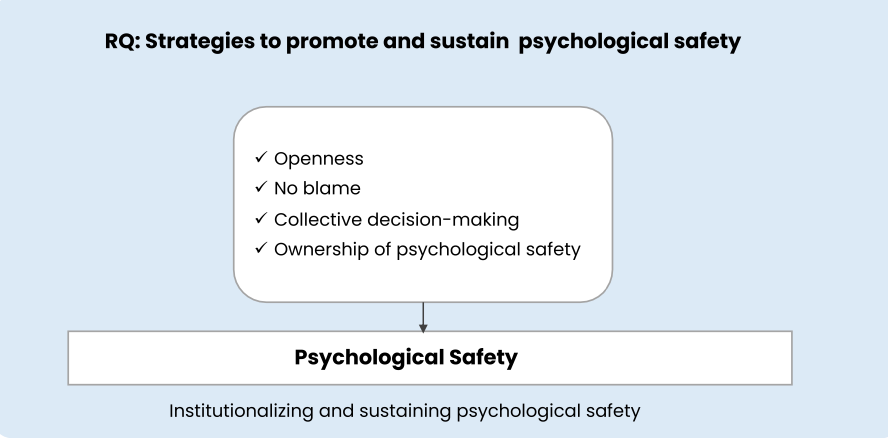RDEL #52: How do agile development teams build psychological safety?
This week we look at research that discovers the top factors for establishing psychological safety in engineering teams.
Welcome back to Research-Driven Engineering Leadership. Each week, we pose an interesting topic in engineering leadership, and apply the latest research in the field to drive to an answer.
Psychological safety is a key driver of high-quality outcomes in engineering teams. This week we look at the context of teams who use Agile and ask: how is psychological safety established in agile development teams?
The context
Psychological safety is defined as the shared belief among team members that it is safe to take interpersonal risks. This environment allows individuals to speak up, offer ideas, and make mistakes without fear of negative consequences. The concept gained renewed attention in the 1990s through the work of Kahn and Edmondson, who linked psychological safety to various beneficial outcomes such as improved learning and performance at both individual and team levels. We previously covered how psychological safety impacts engineering teams more broadly.
Agile software development emphasizes iterative development, self-organizing teams, and close collaboration, which are all practices that can be significantly enhanced by psychological safety. In agile teams, the ability to adapt quickly to change, engage in continuous improvement, and innovate effectively is crucial. This makes the study of psychological safety particularly relevant in the context of Agile development, as it supports the core agile principles of transparency, collaboration, and customer focus.
The research
To study how psychological safety is established in agile software development teams, researchers used a mixed-methods approach including 18 qualitative interviews and a quantitative survey of 365 participants to validate the findings from the interviews.
The study found that psychological safety in agile teams is significantly influenced by leadership, team, and individual strategies. Key findings include:
No Blame Culture: Teams must foster an environment where mistakes are seen as learning opportunities rather than personal failures. This strategy was found to have the strongest relationship with psychological safety (β = 0.26, p < 0.001) .
Leadership Ownership: The study found a significant relationship between leadership ownership and psychological safety (β = 0.14, p < 0.05) .
Collective Decision-Making: Inclusive decision-making processes enhance team members' sense of safety and belonging. This was also significantly related to psychological safety (β = 0.21, p < 0.001) .
Openness: Promoting open communication where team members feel heard and valued is crucial. Openness was significantly associated with psychological safety (β = 0.15, p < 0.01) .
The application
These findings should serve as a great blueprint for how to encourage and increase psychological safety in engineering teams. Some ways that managers can put these findings into practice on their own teams include:
Model a no-blame culture: To facilitate a no-blame culture, managers can serve as a model by openly admitting their own mistakes and encouraging team members to share their views without fear of reprisal. Establishing a no-blame culture can help team members feel secure in taking risks and experimenting with new ideas, which is vital for innovation and continuous improvement.
Drive team-wide decision making. Involving team members in decision-making processes can increase their sense of ownership and commitment to the team's goals. Regularly soliciting feedback and showing that it is valued and acted upon can also reinforce a culture of openness and trust.
By integrating these practices, engineering leaders can create a supportive environment that enhances both individual and team performance, aligning with the agile values of collaboration and transparency.
—
Have a wonderful week, and Happy Research Monday!
Lizzie


